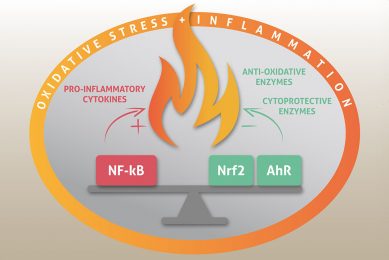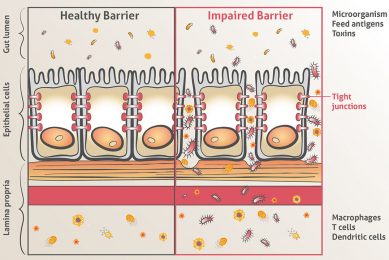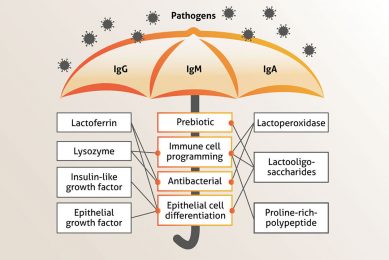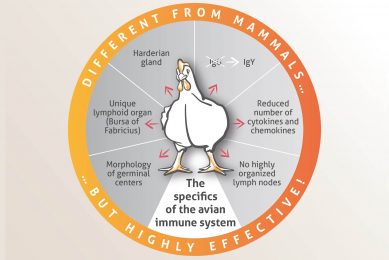Hot Talks: Feeding the animal, the immune system and the microbiota
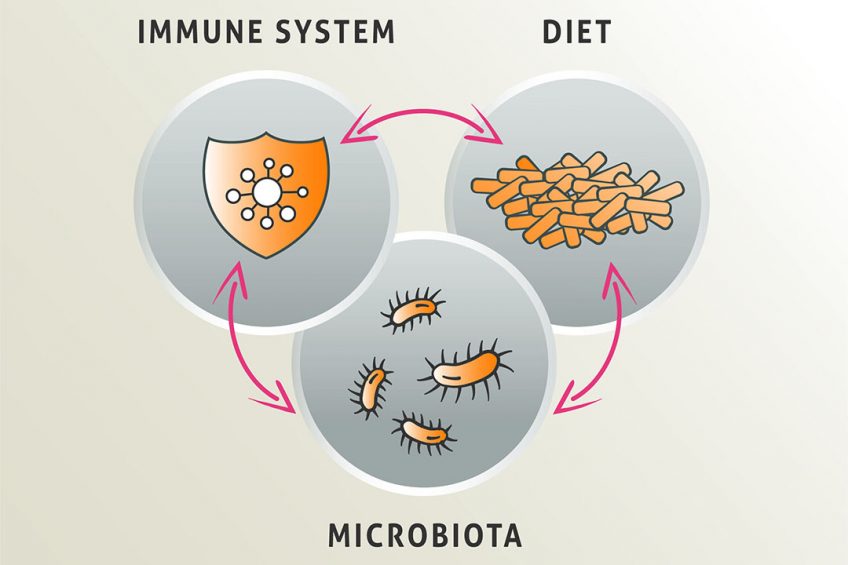
Feed additives company Phytobiotics has invited a panel of renowned experts from around the globe to share their knowledge and expertise into the interplay between the immune system, inflammation, the gut microbiota on the one hand, and animal health and performance on the other. The second in the series of ‘Hot Talks’ will discuss the immune system in farm animals and how it interacts with the gut microbiota.
Tobias Steiner: Good morning Mike, thank you for being our guest today.
Your research has been related to the influence of feed on the immune system and the microbiota of farm animals. How have the findings of this research shaped your knowledge about this important system?
Mike Kogut: “I find it astonishing that the gut microbiota are so involved in the function of the immune system, locally and systemically, but together the microbiota and immune system regulate so much of the physiology of the whole animal from the brain, the lung, the liver and muscle. Our work now is essentially integrating what is the involvement of the microbiota, what are the microbiota producing that can be used to modulate immunity. My lab has always been involved in why things work the way they do. Understanding how the microbiota, their products and the immune system work together to regulate host physiology has always been more intriguing to me than describing what was found if the animal was provided a nutrient or additive.”
Feeding the immune system comes at a cost. Can you explain what mechanisms make this system costly to the animal?
“The immune system requires energy to function optimally. The costs of innate immune activation are bioenergetically expensive – the diversion of chemical energy away from the maintenance of physiological traits. Further, production animals are faced with not only frequent immune system challenges of microbial infections, but also chronic gut inflammation caused by feed changes and other environmental stresses. Although the amount and balance of nutrients needed for a robust immune response are not known, the immune system clearly requires a continuous supply of nutrients that increases during a response. These nutritional demands likely result in trade-offs with competing processes such as growth and reproduction.”
Is it possible to put an estimate to that cost, e.g. for a subclinical enteritis vs. a severe enteritis?
“I know of no studies that have provided a financial ‘cost’ to inflammation, subclinical or clinical. Chronic low-grade inflammation induces an imbalance between cellular-energy availability and expenditure. Inflammation increases the need of immune cells for rapid generation of cellular energy. To meet this need, immune cells shift to aerobic glycolysis for energy production, a less-efficient, but fast-acting pathway. The extended reliance on aerobic glycolysis leads to reduced nutrient availability and thus less energy availability for the production of eggs, meat or milk. To compensate, the body increases lipid and protein metabolism for ATP production.”
How is the microbiota involved in the interaction with the immune system and the host?
“The immune system has co-evolved along with a diverse gut flora, not only to create defences against pathogens, but also to develop tolerance for beneficial microbes. As a consequence, the immune system and the gut microbiota developed a mutualistic relationship, regulating one another and cooperating to support each other. The importance of this interaction is highlighted by the fact that 70–80% of the body’s immune cells are found in the gut. The dialogue between the immune system and the microbiota starts at birth or hatch. As the animal grows the microbiota shapes the development of the immune system, and the immune system shapes the composition of the microbiota. In normal conditions the immune system promotes the growth of beneficial microbes and helps maintain a stable microbial community, while in return a healthy microbiota produces metabolites that support the development of immune cells and contribute to the fine-tuning of immune responses.”
And what are the downstream effects of an unbalanced homeostasis between the host and its microbiome?
“Dysbiosis occurs when there is a perturbation in the microbiota composition and/or function that leads to an imbalance between beneficial and harmful bacteria resulting in an unwanted immune response against commensal bacteria. Dysbiosis leads to a depletion of members of the microbiota, leading to a changed composition and lower diversity. A decrease of essential functions directly affecting metabolic activity which can then deprive the host of valuable end products leading to poor gut health and animal performance is the consequence. The intestinal immune system recognises these microbiota changes and ‘attacks’ the microbiota as a foreign invader resulting in an activation of Th17 cells and the production of pro-inflammatory cytokines and chemokines, villous blunting, an influx of inflammatory cells into the lamina propria, i.e. inflammation. Dysbiosis also disrupts colonisation resistance, thus allowing pathogens like Salmonella typhimurium or Clostridium perfringens a physiological ‘opening’ to exploit for colonisation. The pathogens change the playing field by inducing inflammation and causing other physiological changes (diarrhoea) that influence the intestinal environment to promote their own growth.”
During homeostasis commensals promote the induction of immune tolerance by the activation of regulatory T cells and macrophages that directly sense microbial products or metabolites.
There is a time and place for the traditional ‘feed ‘em and weigh ‘em’ type trials, but they should come after understanding how an additive or chemical or treatment works mechanistically.
Are there any nutrients that are specifically needed during an inflammatory challenge?
“Inflammatory responses are energetically expensive, requiring reallocation of nutrients (glucose, amino acids, lipids) to fuel immune activation. Inflammatory processes are associated with excessive oxidative stress, reduced feed intake and repartitioning of energy directed towards cellular defence mechanisms instead of being used for production. Additionally, inflammatory pathways promote muscle catabolism to supply amino acids and energy substrates for immune responses. These shifts in metabolism also explain the detrimental effects on performance and carcass traits commonly associated with chronic inflammation which results in significant economic losses.”
Should the impact of nutrition on the immune system and the microbiota be considered more in future feed formulations?
“Interactions between nutrition, the microbiome and host determine crucial physiological processes including immunity, metabolic functions and disease susceptibility. In contrast to the animal, the microbiome shows great plasticity towards environmental factors, i.e. diet and nutrition. So it is quite possible that diets be fine-tuned to maintain homeostasis between the host and the microbiome at the least possible cost.”
Talking about future perspectives – where do you recommend academia and the livestock industry to focus R & D activities to manage that homeostasis in farm animals?
“We need to start thinking outside the box a bit more; i.e. break some of the old paradigms. First, start concentrating on function or mechanism of action: Understanding the functional activity of the gut or sections of the gut is imperative before we can ascertain the HOW do we do so. Second, we need a better understanding of microbial ecology or how microbial populations work together to interact with the host. We now have the tools available, high-throughput sequencing, metatranscriptomics and metaproteomics, to begin to unravel these interactions to identify molecules that are used to communicate with the immune system and the microbiota at every part of the intestine. It would be foolish to believe that what is happening in the upper intestine has no effect on what is happening in the lower gut. There is a time and place for the traditional ‘feed ‘em and weigh ‘em’ type trials, but they should come after understanding how an additive or chemical or treatment works mechanistically.”
Thank you for your time and the interview Mike.
Stay tuned for our next interview with Jeremy Cottrell who will dive into the topic of heat stress and its effects on physiology, well-being, and performance.



